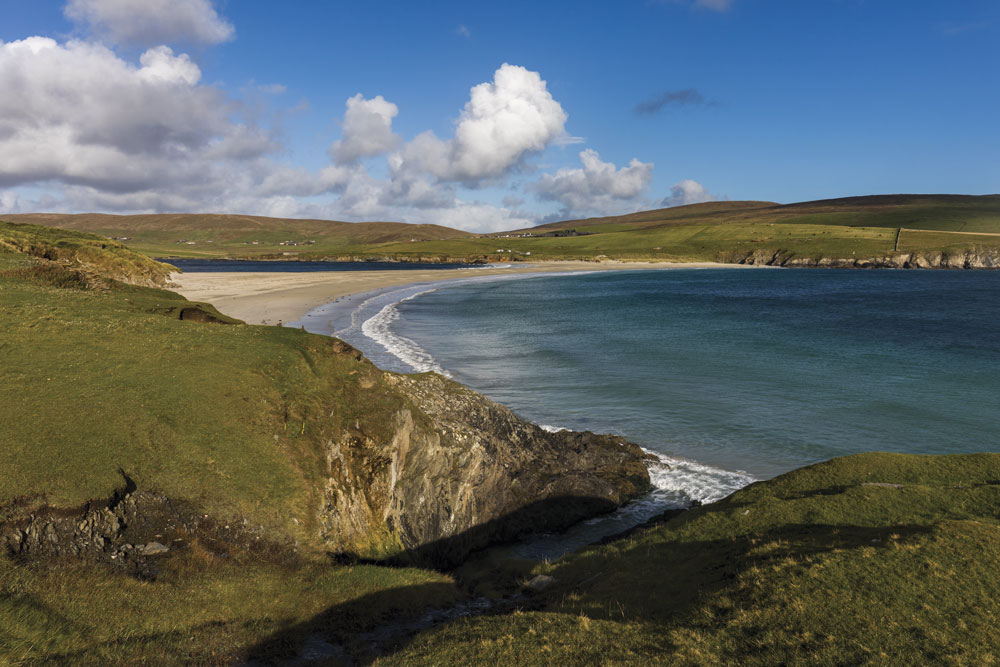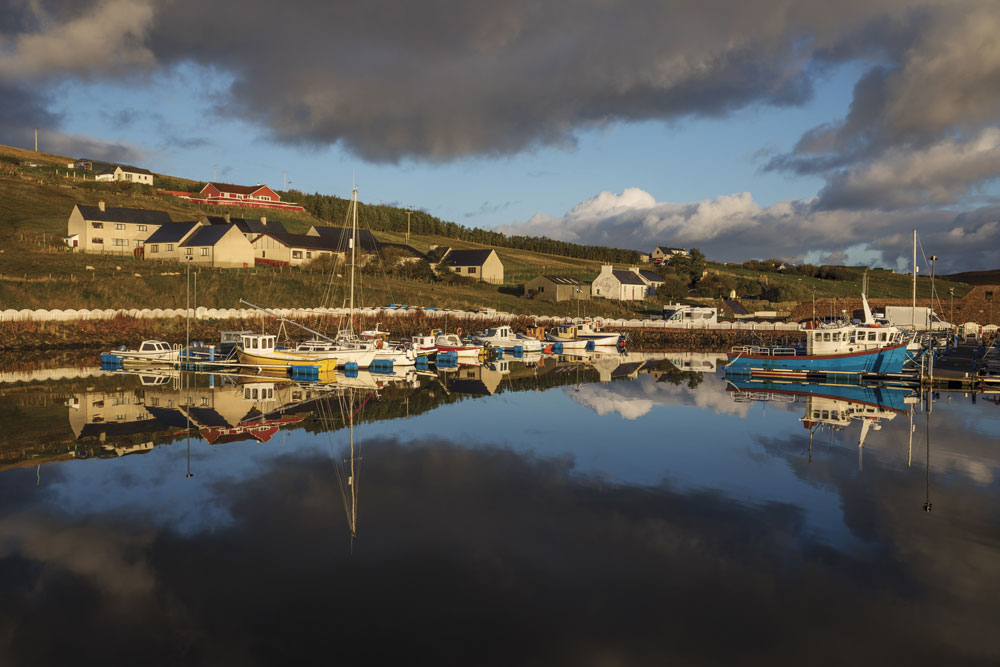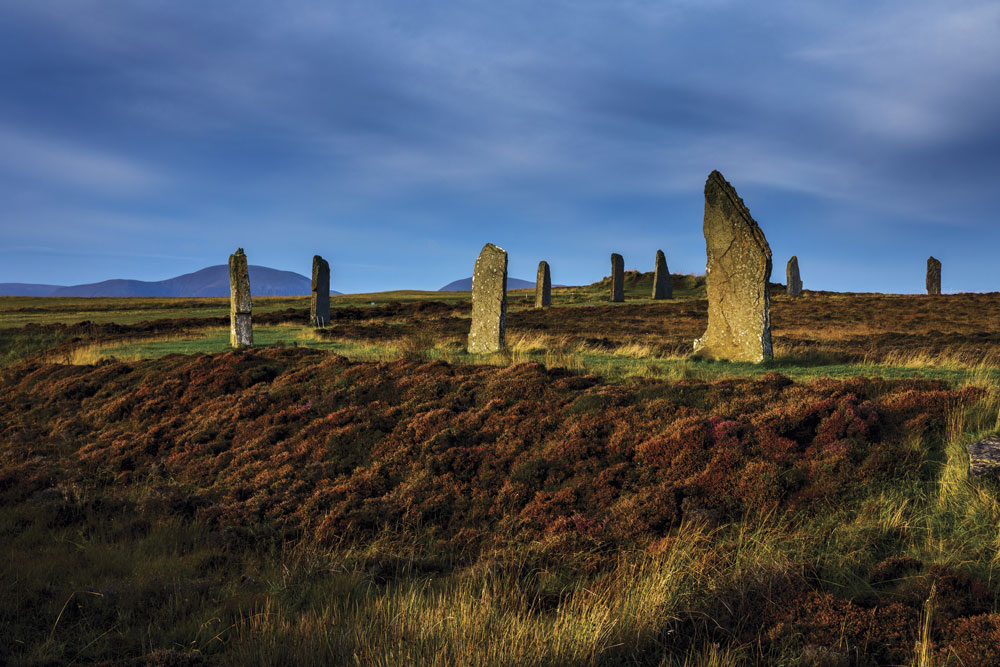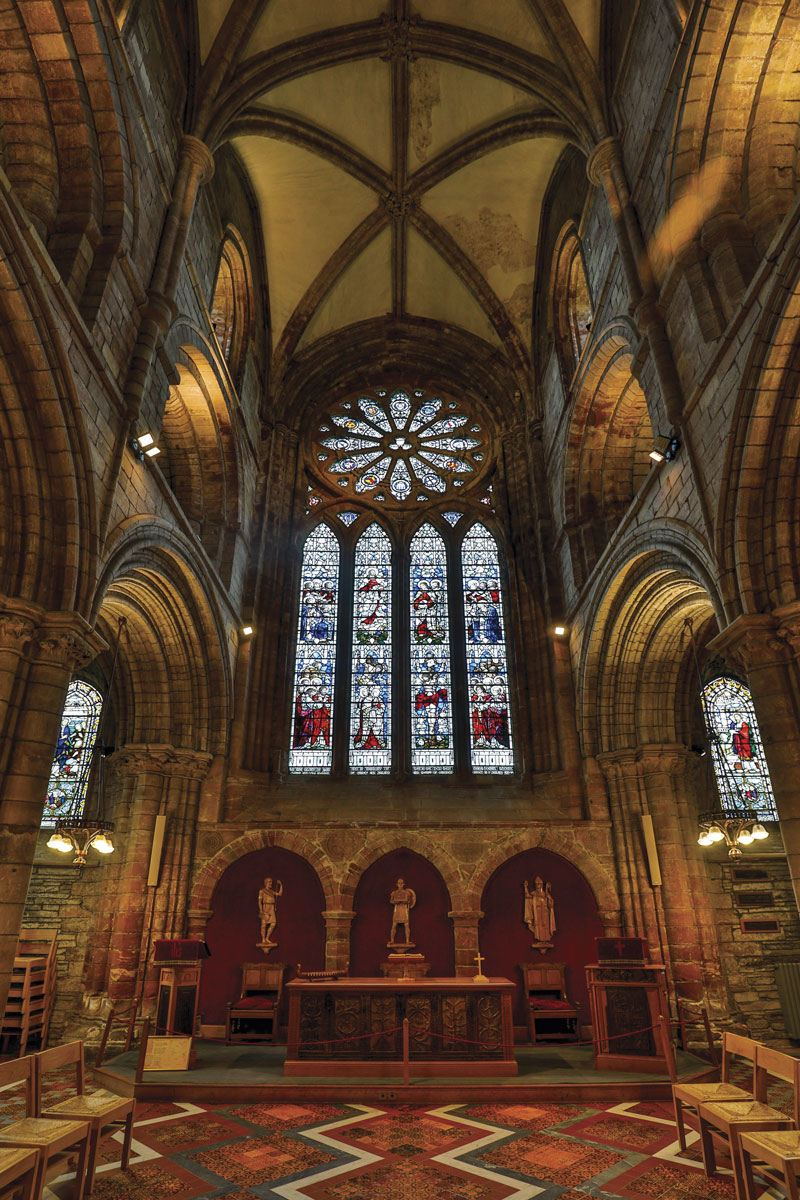Motorhome travel: Exploring Orkney and Shetland
Words and photos by David Chapman
My wife, Sarah, and I agree that if one of us really wants to do something then we should both do everything we can to make that happen. Those words had rung loudly in my ears when Sarah said what she really wanted was to take part in Wool Week in late September.
“Fine,” I said. “Where is Wool Week?”
“Shetland,” she replied, rather timidly.
It’s quite an undertaking for us to get from home in Cornwall to the most northerly isles in the UK and it’s expensive.
I worried about what I would do whilst Sarah was spinning, crocheting and knitting with a lot of other enthusiasts, although Sarah often has that problem whilst I’m out photographing wildlife. It was decided – we would go to Shetland for Wool Week, with a short stay in Orkney on the way...
Orkney has many things to offer: a beautiful coastline, wonderful wildlife and amazing archaeology.

At Birsay, a storm was so strong that the tidal causeway remained covered by the sea even at low tide. There were plenty of common seals in the sea and on the rocks and gannets, great skuas, fulmars, eiders and shags were blown close to the shore.
We headed for Kirbuster Farm Museum, a splendidly atmospheric place with a peat fire burning in the middle of a sixteenth century farmhouse. The barn, house and more recent Victorian extension all offer fascinating insights into Orkney life.
I also found the Orkney Museum in Kirkwall particularly helpful in understanding the timeline of historical events across the islands. It was fascinating to read about some of the important people and traders of the islands in times past.
We headed to Deerness to explore some beaches. Taracliff Bay is very beautiful, but our favourite was Newark Bay where the parking overlooks the sea and I could watch grey and common seals as well as eider, cormorant, shag and a puffin close to shore, plus many gannets diving in the sea.

We slept well in our cabin on our crossing to Lerwick, Shetland, that night. When I went to get back in the motorhome the next morning it dawned on me that the car deck was dominated, not by lorry drivers or tourist couples, but by women wearing hand-knitted jumpers with matching woolly hats! I hadn’t realised just how big Wool Week is.
There were a lot of ‘wool-widowers’ wandering the streets of Lerwick looking lost. Sarah thoroughly enjoyed the five workshops and one talk she attended and all the camaraderie, whilst I explored.
I spent many a happy hour photographing winter-plumaged black guillemots in Lerwick Harbour and visited some of the beauty spots such as Clickimin Broch and St Ninian’s Isle.
Near Burra, Sarah and I walked and cycled around Hamnavoe and the beautiful Banna Minn Beach.
On a day with high winds and driving rain, we visited the award-winning Frankie’s, the most northerly fish and chip shop in Britain. To burn off some of the calories, we parked near the end of the road on Muckle Roe and walked to the Hams of Muckle Roe for a round trip of about seven miles. The North Ham was very beautiful: the high cliffs with arches and stacks contrasting with the sweeping pebble beach. It’s a fine place with a loch, watermill and abandoned village inland for extra interest.
For our final night on Shetland, we stayed at Skeld Marina and woke to a fine, calm morning – the best of our entire trip. Red-breasted mergansers formed a flock in the sheltered voe and common seals slapped their tails and flippers with glee at the prospect of a sunny day.
Encouraged by the weather, we cycled to Walls village via the remains of Stanydale Temple. It is thought that the building that once stood at Stanydale might have been a temple because the floor plan is very similar to temples found in the Mediterranean area.

The stones used to make the building are larger than those found in most typical dwellings of that period (circa 1600BC) and the two posts, used to support the roof, were of spruce, which doesn’t grow here and were probably brought over from Scandinavia. This is a very special place in an atmospheric location but, be warned, the path to the temple can be very boggy.
I don’t think that it would be possible to see all there is to see in Shetland in a month. My advice is don’t feel that you have to see it all. Concentrate on smaller areas that you can get to know – and love.








.jpg)



Recent Updates
Engine management lights: all you need to know
What is the engine management light? What does it mean, and what do I have to do? ...
Motorhome air suspension: all you need to know
Motorhomes are heavy and the additional weight of equipment and height of the bodywork can increase the loads ...
Motorhome WiFi: how to get better motorhome internet
Staying connected on the move is more and more essential, so relying on campsite WiFi isn't an option – here ...
A class of their own - our guide to A-class motorhomes
Thinking of trading up to an A-class, or even going straight to the top of the motorhome tree? We guide you ...
Explore overseas on a motorhome dream tour
Enjoy exotic travel in a campervan or motorhome by hiring, swapping with someone else or exporting your ...
Motorhome water systems: everything you need to know
On-board water is an important part of every motorhome – here’s everything you need to know ...
Campervanning in Europe: what you need to know
Whether you're planning a leisurely drive through the French countryside, navigating bustling city streets in ...
Campervan security: all you need to know
With thefts on the increase, it’s important to know how to keep your campervan secure and prevent campervan ...
Campervan furniture: everything you need to know
Our campervan experts guide you through all the essentials for your campervan, including tables, chairs, ...
Campervan finance: how to fund your purchase
Here we look at the different types of campervan finance available, to help you decide what’s the best option ...
Other Articles
Britain’s best used motorhomes
Want a great motorhome without paying the premium for a new one? Here's a guide to the best you can get in the pre-owned market for each layout, ...
Which motorhome? Choosing the perfect motorhome for you
Choosing a motorhome or campervan is one of the biggest buying decisions you’ll ever make, so it's important ...
Campervan washroom essentials: stay fresh on the road
Our guide will take you through the campervan washroom essentials you'll need so you're well-prepared for ...
Dogs in campervans: all you need to know
Follow our advice and your dog will enjoy campervanning as much as you do ...
Electric campervans: all you need to know
Our guide will take you through everything you need to know about electric campervans and what the future ...
Motorhome electrics: a complete guide to your motorhome electrical set-up
Motorhome electrics can dramatically enhance the convenience and comfort of your vehicle – but they can be ...
Lighting for campervans: all you need to know
We guide you through all the lighting options available for you and your campervan, including interior ...
Electric bikes for motorhomes: our ultimate guide
Read our comprehensive guide to electric bikes for motorhome owners, helping you add electric power to your ...
Our guide to 'cheap' motorhomes in 2024
If you're on the hunt for an affordable new motorhome, this is the best place to start – we've rounded up a ...
Campervans in winter: all you need to know
Here's your guide to preparing your campervan for the colder months, whether you will be using it or putting ...